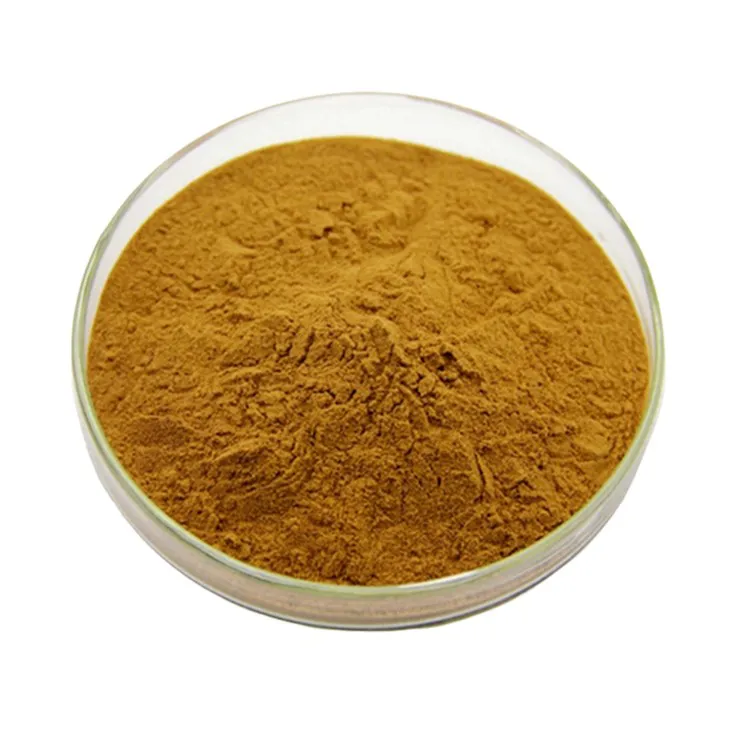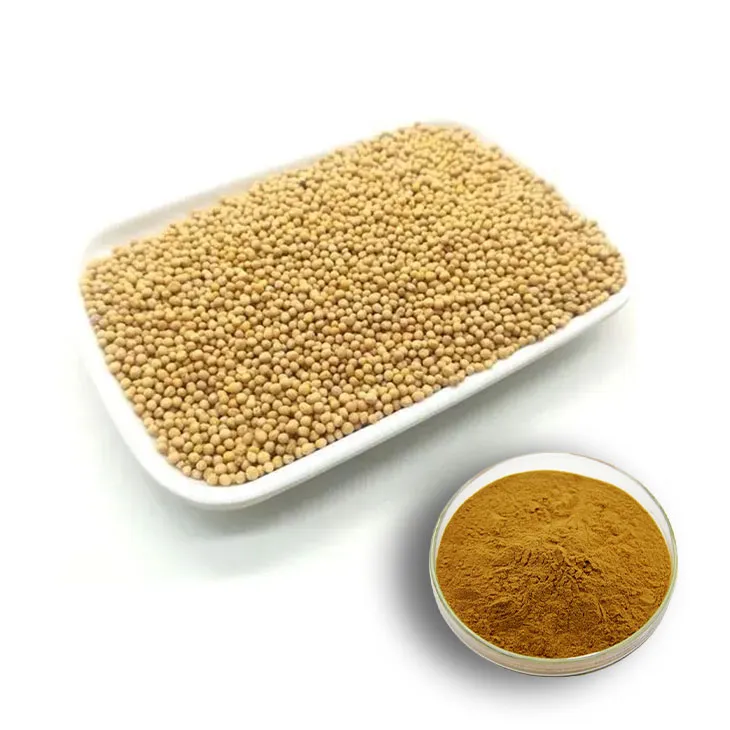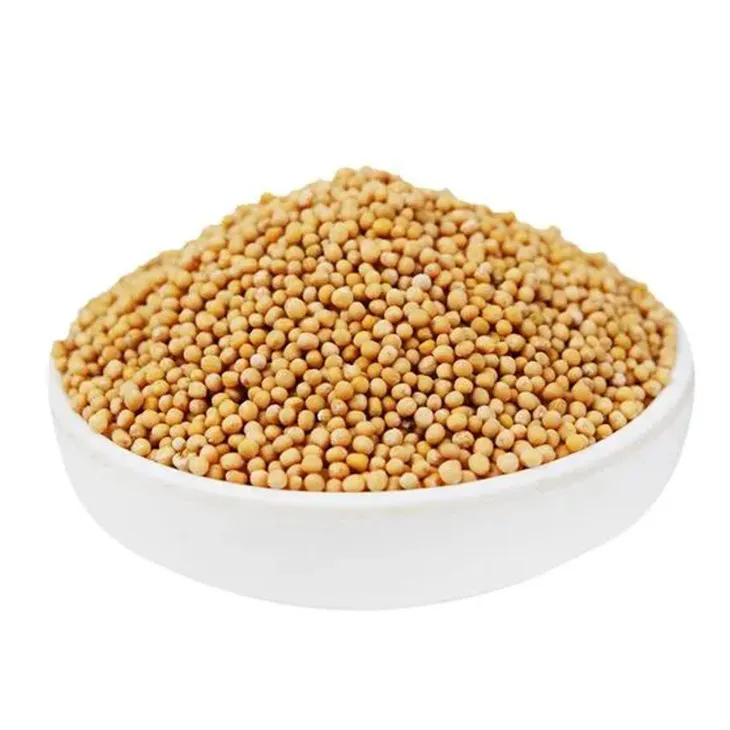- 0086-571-85302990
- sales@greenskybio.com
Extract the white mustard seed extract by steam distillation.
2024-11-26

1. Introduction
White mustard (Sinapis alba) has been known for its various properties for centuries. The extraction of its active components through steam distillation is a significant process in the field of natural product research. Steam distillation is a widely used technique for isolating volatile compounds from plant materials. In the case of white mustard, this method allows us to obtain an extract with potential applications in different industries such as food, medicine, and cosmetics.

2. Raw Materials: White Mustard Seeds
2.1 Origin and Cultivation
White mustard is native to the Mediterranean region and has been cultivated in many parts of the world. It is a hardy plant that can adapt to different soil and climate conditions. The quality of the white mustard seeds used for extraction is highly dependent on the cultivation practices. Seeds should be harvested at the right time to ensure maximum content of the desired compounds. For example, they are typically harvested when the pods are fully mature but not yet split open.
2.2 Chemical CompositionWhite mustard seeds contain a variety of compounds. The main components include glucosinolates, which are sulfur - containing glycosides. These glucosinolates, such as sinalbin in white mustard, play a crucial role in the biological activity of the extract. Additionally, the seeds also contain proteins, lipids, and small amounts of other secondary metabolites.

3. Steam Distillation Process
3.1 Preparation of the Sample
Before starting the steam distillation, the white mustard seeds need to be properly prepared. First, the seeds are thoroughly cleaned to remove any dirt, debris, or foreign matter. Then, they are usually crushed or ground into a fine powder. This increases the surface area of the seeds, allowing for more efficient extraction during the distillation process.
3.2 The Steam Distillation ApparatusA typical steam distillation setup consists of a distillation flask, a condenser, and a collection vessel. The distillation flask is where the white mustard seed powder is placed along with water. The condenser cools the vapor produced during distillation, causing it to condense back into a liquid. The collection vessel is used to collect the distilled extract.
3.3 The Distillation Steps- Place the prepared white mustard seed powder in the distillation flask. Add an appropriate amount of water. The ratio of seed powder to water is crucial and typically ranges from 1:5 to 1:10 depending on the nature of the seeds and the desired concentration of the extract.
- Heat the distillation flask gently. As the water in the flask starts to boil, steam is generated. The steam passes through the white mustard seed powder, carrying with it the volatile compounds present in the seeds.
- The vapor mixture then enters the condenser. Here, the hot vapor is cooled down, and it condenses into a liquid. This liquid contains the White mustard seed extract along with water.
- Finally, the condensed liquid is collected in the collection vessel. At this stage, the extract is a mixture of water and the desired compounds from the white mustard seeds.

4. Ensuring Quality and Purity of the Extract
4.1 Removal of Impurities
After the initial collection, the extract may contain impurities such as small particles of seed debris and other non - volatile substances. Filtration is a common method used to remove these impurities. A fine - mesh filter or a filter paper can be used to filter the extract, ensuring a cleaner product.
4.2 Concentration and DryingTo increase the concentration of the active compounds in the extract, the water content needs to be reduced. This can be achieved through techniques such as evaporation under reduced pressure or freeze - drying. Evaporation under reduced pressure is a gentle method that helps to preserve the integrity of the active compounds while removing the water. Freeze - drying, on the other hand, is a more advanced technique that can produce a highly concentrated and stable extract.
4.3 Quality Control Analysis
- Chemical analysis is essential to determine the composition of the extract. Techniques such as high - performance liquid chromatography (HPLC) can be used to identify and quantify the main compounds in the White mustard seed extract, such as glucosinolates.
- Microbial testing is also necessary to ensure that the extract is free from harmful microorganisms. This includes testing for bacteria, fungi, and yeast.

5. Potential Uses and Benefits of White Mustard Extract
5.1 In the Food Industry
White mustard extract can be used as a natural flavoring agent. It imparts a characteristic pungent and slightly bitter taste to food products. It is also used in the production of mustard - based condiments, adding both flavor and potential health benefits. Moreover, some studies suggest that the glucosinolates in white mustard extract may have antimicrobial properties, which can help in preserving food.
5.2 In Medicine
- White mustard extract has been studied for its potential anti - inflammatory properties. The glucosinolates and other compounds in the extract may help reduce inflammation in the body, which could be beneficial for conditions such as arthritis.
- There is also evidence suggesting that it may have antioxidant effects. Antioxidants are important for protecting the body's cells from damage caused by free radicals.
Due to its potential antimicrobial and antioxidant properties, white mustard extract can be used in cosmetics. It may be added to skin - care products such as creams and lotions to help protect the skin from microbial infections and oxidative stress. Additionally, its pungent smell may be masked and used in products for a natural and unique scent.
6. Conclusion
Steam distillation is a valuable method for extracting White mustard seed extract. By carefully following the steps of the process, from the preparation of the raw materials to the final quality control, it is possible to obtain a high - quality extract. The potential uses of white mustard extract in food, medicine, and cosmetics make it an interesting and promising natural product. Further research is still needed to fully explore its properties and potential applications, but the current knowledge already shows its great value.
FAQ:
What are the main components of white mustard seeds?
White mustard seeds mainly contain various substances such as glucosinolates, proteins, and some essential oils. Glucosinolates are an important part of what gives white mustard its characteristic properties. These components play significant roles in different aspects, for example, they can contribute to the flavor, potential health benefits, and reactivity during the extraction process.
What are the detailed steps in steam distillation for white mustard seed extract?
First, the white mustard seeds are ground into a fine powder. Then, the powdered seeds are placed in a distillation apparatus. Steam is passed through the sample. As the steam heats the sample, the volatile components start to vaporize. These vapors, which contain the desired extract, are then condensed back into a liquid form. Finally, the condensed liquid is collected as the white mustard seed extract.
How can we ensure the quality of white mustard seed extract during steam distillation?
To ensure the quality, precise control of the distillation temperature is crucial. If the temperature is too high or too low, it may lead to incomplete extraction or degradation of the active components. Also, using high - quality white mustard seeds as raw materials is essential. Regular maintenance of the distillation equipment to prevent contamination is another important factor. Additionally, proper storage of the extract after production, in a cool, dry, and dark place, can help maintain its quality.
What are the potential health benefits of white mustard seed extract?
White mustard seed extract may have several potential health benefits. It may have anti - inflammatory properties, which could be beneficial for reducing inflammation in the body. Some studies suggest it may also aid in digestion as it can stimulate the production of digestive enzymes. Additionally, it might have antimicrobial effects, helping to combat certain harmful microorganisms in the body.
What are the common uses of white mustard seed extract?
The extract can be used in the food industry as a flavoring agent, adding a characteristic pungent and tangy flavor to various products. In the cosmetic industry, it may be used in products for its potential skin - beneficial properties, such as improving skin health. It also has potential applications in traditional medicine, where it may be used in remedies for certain ailments related to digestion or inflammation.
Related literature
- Steam Distillation of Botanical Extracts: A Comprehensive Review"
- "White Mustard Seed: Composition, Properties, and Applications"
- "Quality Assurance in Extract Production via Steam Distillation"
- ▶ Hesperidin
- ▶ citrus bioflavonoids
- ▶ plant extract
- ▶ lycopene
- ▶ Diosmin
- ▶ Grape seed extract
- ▶ Sea buckthorn Juice Powder
- ▶ Beetroot powder
- ▶ Hops Extract
- ▶ Artichoke Extract
- ▶ Reishi mushroom extract
- ▶ Astaxanthin
- ▶ Green Tea Extract
- ▶ Curcumin Extract
- ▶ Horse Chestnut Extract
- ▶ Other Problems
- ▶ Boswellia Serrata Extract
- ▶ Resveratrol Extract
- ▶ Marigold Extract
- ▶ Grape Leaf Extract
- ▶ blog3
- ▶ blog4
-
Chinese Withania somnifera Extract Factory.
2024-11-26
-
中国松树皮提取物粉粉末供应商
2024-11-26
-
High - quality Marigold Extract Products.
2024-11-26
-
100% Pure Natural Mango - Flavored Powder.
2024-11-26
-
Marigold Extract
2024-11-26
-
Artichoke Extract
2024-11-26
-
Astaxanthin
2024-11-26
-
Lavender Extract
2024-11-26
-
American Ginseng Root Extract
2024-11-26
-
Lily extract
2024-11-26
-
Curcumin
2024-11-26
-
Peppermint Oil
2024-11-26
-
Kidney Bean Extract
2024-11-26
-
Europen Bilberry Extract
2024-11-26





















